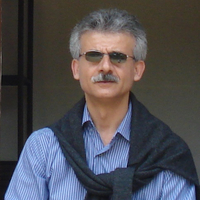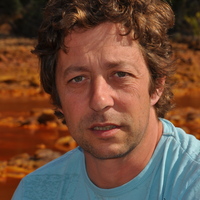
Matteo .Tacca
Matteo Tacca attained a bachelor's degree in literature in 2013 at the University of Eastern Piedmont, discussing a thesis in modern history entitled The historiographical image of the Savoy's State in the XVII century iunder the supervision of professor Claudio Rosso.He continued his studies at the same institution, attaining in 2015 a master's degree in classical, modern and comparative philology, discussing a thesis in methods for the historical analysis of cultural heritages entitled Videntibus et non contradicentibus. Practices and forms of possession in the alto vercellese (XVI-XVIII centuries) under the supervision of professor Angelo Torre.His interest for the aspect relatives to mutations in land ownership and in the act of possession used to sanction and exercise it, brought him to deepen his studies through a Ph.d. Starting from october 2016 he holds the post of Ph.d student at the Laboratory of Alp's history (LabiSAlp), University of Italian Switzerland. His three-years research project, finalized to the writing of a doctoral thesis and coordinated by professor Luigi Lorenzetti, try to analyze, through the case study of the french Combe de Savoie area, land ownership and land exploitation changes in the Alp's valley bottoms across the great socio-economic changes occurred between XVIII and XIX centuries.
less
Related Authors
Andrej Dujella
University of Zagreb
Hemin Koyi
Uppsala University
Jana Javornik
University of East London
Graham Martin
University of Leicester
Gwen Robbins Schug
University of North Carolina at Greensboro
Gabriel Gutierrez-Alonso
University of Salamanca
John Sutton
Macquarie University
Eros Carvalho
Universidade Federal do Rio Grande do Sul
Kevin Arbuckle
Swansea University
Jesper Hoffmeyer
University of Copenhagen










Uploads
Thesis by Matteo .Tacca
This work has followed a line of research started with the first local history studies in the late fifties of the XIX century, unearthing several significant actions performed by local actors during the territorial conflicts, defined as practices. Local communities archives, the Arborio di Gattinara family archive (who were the landholders of the feud in the modern age) and materials discovered at the Archivio di Stato di Torino, with particular attention to the Perequazione Generale del Piemonte-related document, provided the primary sources for this study. The findings from the research show the importance of the concept of possession: the practices themselves were considered by local actors as a method of actualization and certification of a property right applied to possession of territory renting, plowing (roncare), grazing livestock, cutting woods, hunting and so on.
The first chapter will be centred on framing social and juridical implications of the continual production of territories starting from an undisputed area. This particular approach to culture as an ensemble of actions justifies the absence of a structure within the feud, shifting the focus on the meaning of each single practice. The difference between petitory right and possessory interest would define the reasons why, in the traditional society of old regime, possessory interest was the real expression of the customs remembered by the village elders.
In certain instances different "ways of possession" contribute to define the territorial status around a community.
In the second chapter, the Lenta case of study illustrates the relationship of interdependence that occurred between three different entities: a monastery, a community and a local lord. The complex game of rights, prerogatives and privileges unearthed from the conflict show an extremely fragmented territory, with a remarkable tendency to exploit wide uncultivated lands. Aspects of primary importance were underlined as well from the conflicts about exploitation of collective goods, almost always identified as uncultivated lands. The latter were often object of tensions between members of the community and the count of Gattinara, who often played the role of promoter of privatization.
On the other hand, the relationship between the monastery and collective goods was different: the nuns of the monastery of San Pietro Martire of Lenta shared the exploitation of common woodlands and baragge (a particular type of moorland characteristic of this area) with the community. At the same time, the monastery required a fee for the rented territories that were kept uncultivated, while cultivated lands were not subject to any form of payment: for this type of territory the community members gave yearly to the monastery one third of the crops; this portion of the harvest was called pars dominicia. A few years later the nuns of the monastery left Lenta, to move to Vercelli between 1583 and 1584; their departure meant the end of an era, probably begun in the early years of XI century, when the community had grown and strengthened around the monastery and created with it a peculiar relationships related to the territory.
From this point of view, practices about the territory contributed to create the identity of certain communities and social groups. In chapter three, my thesis introduces a close examination of the study of the Piedmont territory led between the Seventeen and Eighteenth century by the government of Vittorio Amedeo II of the Savoia Family. This study, known as perequazione generale, brings to the eyes of the Savoia officials an extremely fragmented rural reality, made up of several little settlement units spread across a vast territory. This gives two different points of view of the territory, one from the centre and one from the periphery. In particular, the centre, Turin, used to identify little settlements and associate them with bigger ones.
This is the case of Devesio, a little estate that had been free from any sort of taxation as an immune territory for centuries, only to be unified under the district of Vercelli at the end of XVIII century. The centralization of settlement units was an attempt to obtain territories that had never been controlled by Turin, determining the progressive decline of local customs. However, from the point of view of the outskirts, each and every one of these microcosms created its own sense of belonging to the community starting from shared local practices on the land. Cascinale is a small settlement located along the extreme border of the Savoia territory, constantly threatened by the near community of San Nazzaro, situated in the territory that belonged to Milan. At the beginning of XVII century, despite not being defined by Turin’s officials as a community, but as a small separated settlement of the near community of Recetto, the inhabitants of Cascinale complained about the abuses perpetrated by the community of San Nazzaro in front of the law court of Gattinara, describing practices of collective retaliation against their opponents and defining themselves as the community of Cascinale.
During the third chapter, as well, the culture of borders as a result of the observation of these practices will be analyzed. Boundaries of communities, of properties, of iurisdictio: these were the elements that Turin’s officials were supposed to recognize during a conflict about territorial exploitation rights. In most cases, as in the example of Gattinara and Romagnano, the sources described the organization of a collective inspection led by the eldest community members; the elders themselves led officials to the supervision of milestones, stones located along the border of a certain territory. These ones were a source of information, since their orientation and the etchings they showed represented a code of meanings that only the locals could decipher correctly.
The fourth chapter, finally, describes the set of practices encountered in the previous chapters (grazing, renting, wood cutting, hunting), in the attempt to reconstruct an obscure and underground world, far from the power relationships of the centre, at least until the end of the old regime, but at the same time socially relevant from the anthropological point of view. The analysis of a complex practice like grazing reveals lots of details about transhumance, related to the complex concept of residence and the intense economic relationship of interdependence between the geographical areas of Biella and Vercelli. In this way, rural communities of old regime cease to be considered as archaic institutions relegate to their respective local set, rather becoming entities animated by continuous tensions and communications.
In the background it stands a peculiar way of perceiving everyday life, radically different from our time's, when conflicts grew as much as the by than-unknown private sphere. In fact, practices and actions related to possession contributed, as seen in chapter three, to the construction of a sense of belonging; these actions, originally performed in public, starting from the end of XVI century, had been gradually exiled to the individual and private context. Modern age, especially from this perspective, represents a period of huge transition between a deeply archaic society and the rise of contemporary world, the state of law, and the free market, with its logics of capitalism and private property. Observing the change from the outskirts implies the analysis of territories where the aftermath of this ancient mentality lived on until first half of the XIX century.
Papers by Matteo .Tacca
local politics. I will focus my attention on the Arborio di Gattinara family, who inherited from the
Cardinal Mercurin the feudal rights over the countship of Gattinara. I will analyze some jurisdictional
documentation from their family archives produced during a conflict with a monastery located in the
village of Lenta. These documents will shed light not only on their role in the definition of local
politics over the exploitment of natural resources, but also the existence of rarely seen social groups
that emerge from the sources when they clash with the jurisdiction of the countship.
This work has followed a line of research started with the first local history studies in the late fifties of the XIX century, unearthing several significant actions performed by local actors during the territorial conflicts, defined as practices. Local communities archives, the Arborio di Gattinara family archive (who were the landholders of the feud in the modern age) and materials discovered at the Archivio di Stato di Torino, with particular attention to the Perequazione Generale del Piemonte-related document, provided the primary sources for this study. The findings from the research show the importance of the concept of possession: the practices themselves were considered by local actors as a method of actualization and certification of a property right applied to possession of territory renting, plowing (roncare), grazing livestock, cutting woods, hunting and so on.
The first chapter will be centred on framing social and juridical implications of the continual production of territories starting from an undisputed area. This particular approach to culture as an ensemble of actions justifies the absence of a structure within the feud, shifting the focus on the meaning of each single practice. The difference between petitory right and possessory interest would define the reasons why, in the traditional society of old regime, possessory interest was the real expression of the customs remembered by the village elders.
In certain instances different "ways of possession" contribute to define the territorial status around a community.
In the second chapter, the Lenta case of study illustrates the relationship of interdependence that occurred between three different entities: a monastery, a community and a local lord. The complex game of rights, prerogatives and privileges unearthed from the conflict show an extremely fragmented territory, with a remarkable tendency to exploit wide uncultivated lands. Aspects of primary importance were underlined as well from the conflicts about exploitation of collective goods, almost always identified as uncultivated lands. The latter were often object of tensions between members of the community and the count of Gattinara, who often played the role of promoter of privatization.
On the other hand, the relationship between the monastery and collective goods was different: the nuns of the monastery of San Pietro Martire of Lenta shared the exploitation of common woodlands and baragge (a particular type of moorland characteristic of this area) with the community. At the same time, the monastery required a fee for the rented territories that were kept uncultivated, while cultivated lands were not subject to any form of payment: for this type of territory the community members gave yearly to the monastery one third of the crops; this portion of the harvest was called pars dominicia. A few years later the nuns of the monastery left Lenta, to move to Vercelli between 1583 and 1584; their departure meant the end of an era, probably begun in the early years of XI century, when the community had grown and strengthened around the monastery and created with it a peculiar relationships related to the territory.
From this point of view, practices about the territory contributed to create the identity of certain communities and social groups. In chapter three, my thesis introduces a close examination of the study of the Piedmont territory led between the Seventeen and Eighteenth century by the government of Vittorio Amedeo II of the Savoia Family. This study, known as perequazione generale, brings to the eyes of the Savoia officials an extremely fragmented rural reality, made up of several little settlement units spread across a vast territory. This gives two different points of view of the territory, one from the centre and one from the periphery. In particular, the centre, Turin, used to identify little settlements and associate them with bigger ones.
This is the case of Devesio, a little estate that had been free from any sort of taxation as an immune territory for centuries, only to be unified under the district of Vercelli at the end of XVIII century. The centralization of settlement units was an attempt to obtain territories that had never been controlled by Turin, determining the progressive decline of local customs. However, from the point of view of the outskirts, each and every one of these microcosms created its own sense of belonging to the community starting from shared local practices on the land. Cascinale is a small settlement located along the extreme border of the Savoia territory, constantly threatened by the near community of San Nazzaro, situated in the territory that belonged to Milan. At the beginning of XVII century, despite not being defined by Turin’s officials as a community, but as a small separated settlement of the near community of Recetto, the inhabitants of Cascinale complained about the abuses perpetrated by the community of San Nazzaro in front of the law court of Gattinara, describing practices of collective retaliation against their opponents and defining themselves as the community of Cascinale.
During the third chapter, as well, the culture of borders as a result of the observation of these practices will be analyzed. Boundaries of communities, of properties, of iurisdictio: these were the elements that Turin’s officials were supposed to recognize during a conflict about territorial exploitation rights. In most cases, as in the example of Gattinara and Romagnano, the sources described the organization of a collective inspection led by the eldest community members; the elders themselves led officials to the supervision of milestones, stones located along the border of a certain territory. These ones were a source of information, since their orientation and the etchings they showed represented a code of meanings that only the locals could decipher correctly.
The fourth chapter, finally, describes the set of practices encountered in the previous chapters (grazing, renting, wood cutting, hunting), in the attempt to reconstruct an obscure and underground world, far from the power relationships of the centre, at least until the end of the old regime, but at the same time socially relevant from the anthropological point of view. The analysis of a complex practice like grazing reveals lots of details about transhumance, related to the complex concept of residence and the intense economic relationship of interdependence between the geographical areas of Biella and Vercelli. In this way, rural communities of old regime cease to be considered as archaic institutions relegate to their respective local set, rather becoming entities animated by continuous tensions and communications.
In the background it stands a peculiar way of perceiving everyday life, radically different from our time's, when conflicts grew as much as the by than-unknown private sphere. In fact, practices and actions related to possession contributed, as seen in chapter three, to the construction of a sense of belonging; these actions, originally performed in public, starting from the end of XVI century, had been gradually exiled to the individual and private context. Modern age, especially from this perspective, represents a period of huge transition between a deeply archaic society and the rise of contemporary world, the state of law, and the free market, with its logics of capitalism and private property. Observing the change from the outskirts implies the analysis of territories where the aftermath of this ancient mentality lived on until first half of the XIX century.
local politics. I will focus my attention on the Arborio di Gattinara family, who inherited from the
Cardinal Mercurin the feudal rights over the countship of Gattinara. I will analyze some jurisdictional
documentation from their family archives produced during a conflict with a monastery located in the
village of Lenta. These documents will shed light not only on their role in the definition of local
politics over the exploitment of natural resources, but also the existence of rarely seen social groups
that emerge from the sources when they clash with the jurisdiction of the countship.